Full text
PDF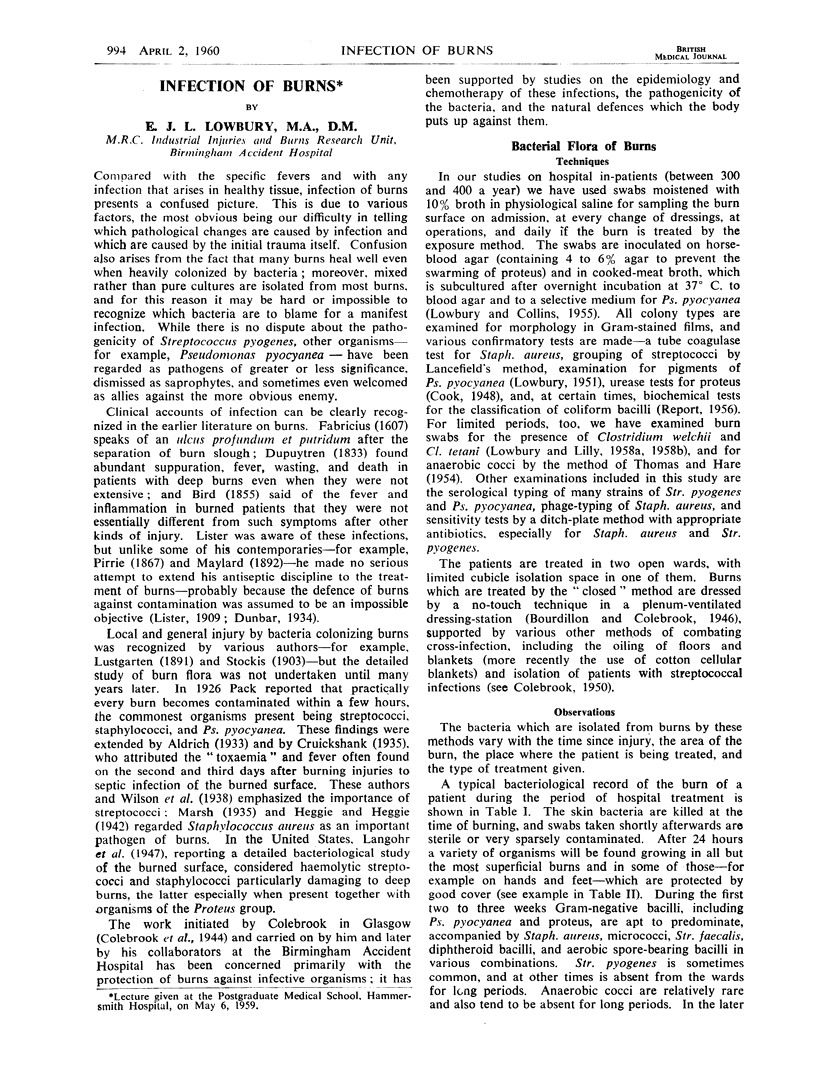
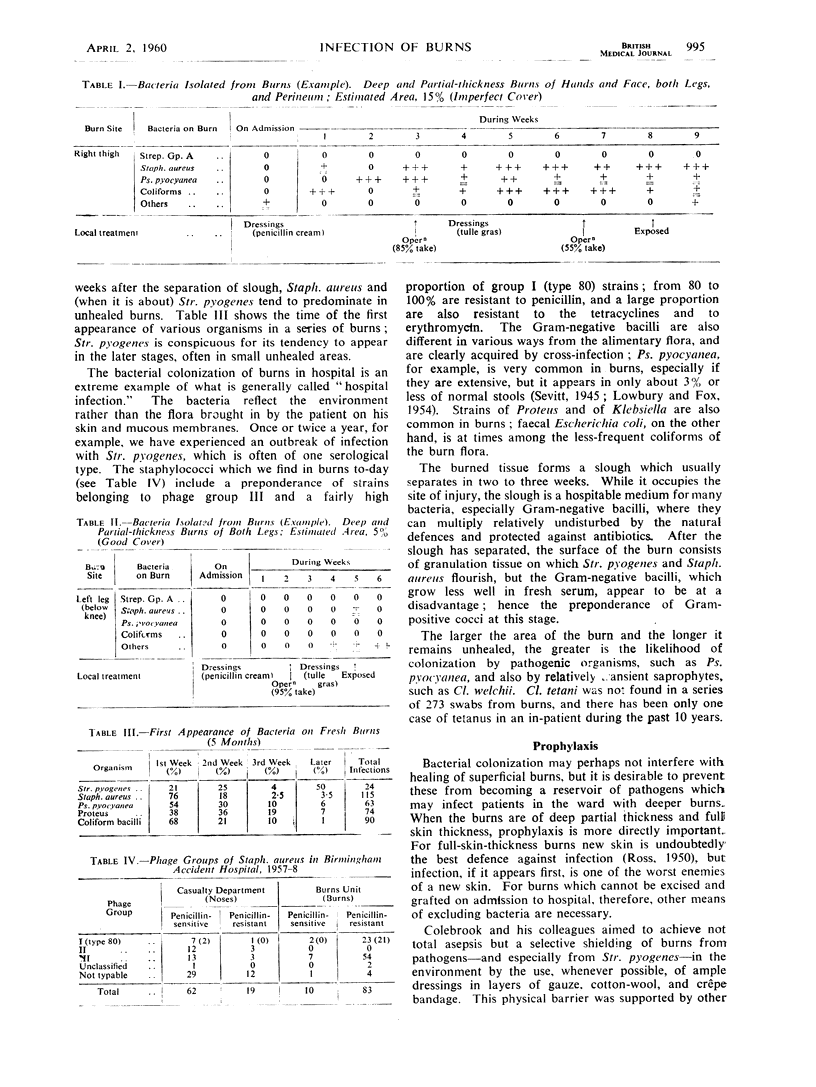
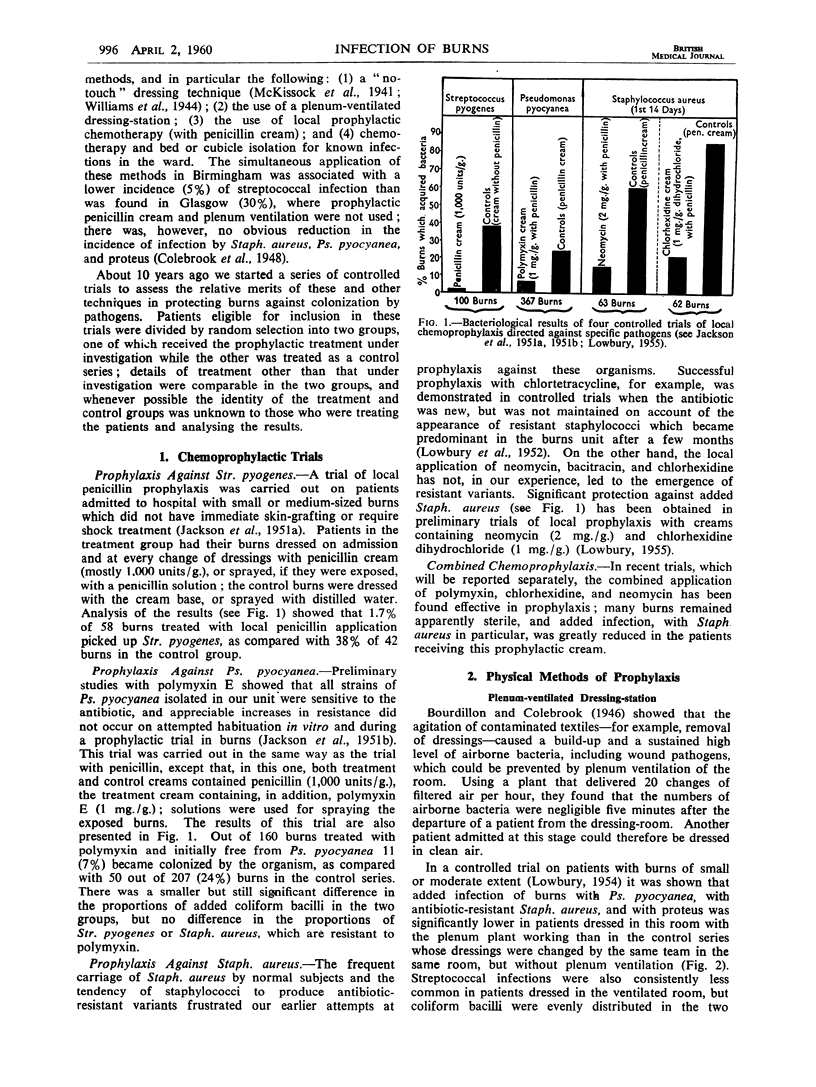
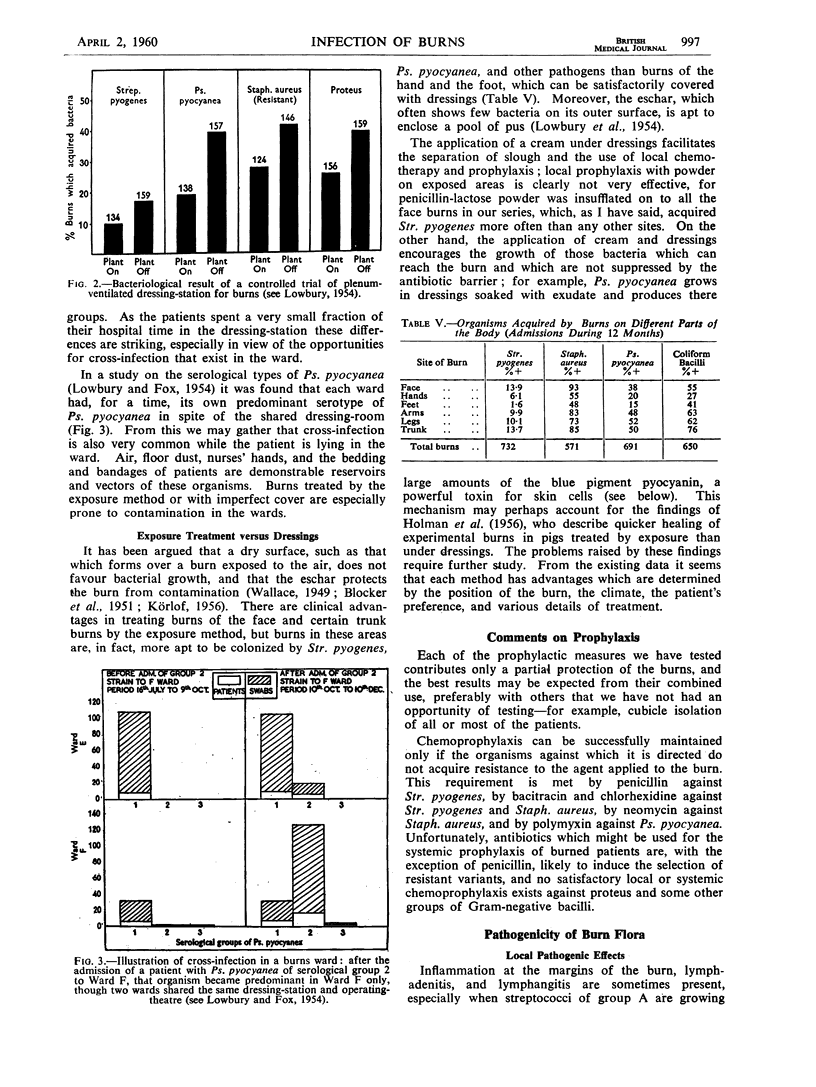
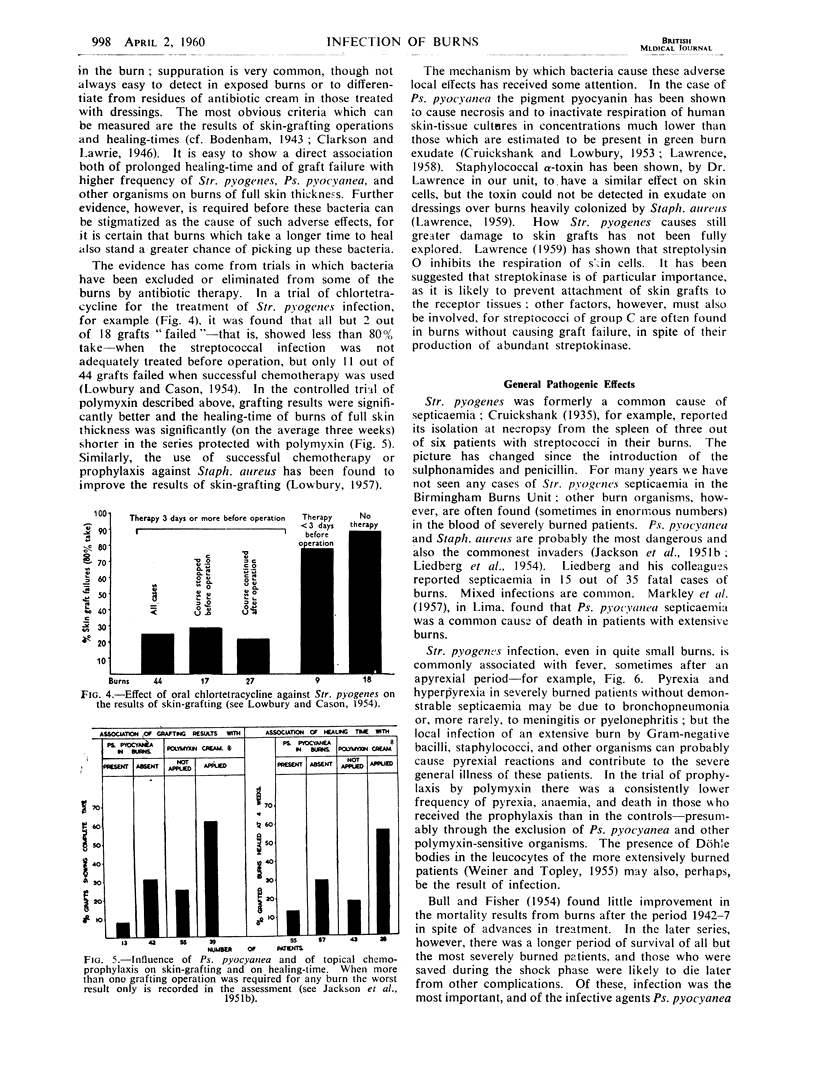
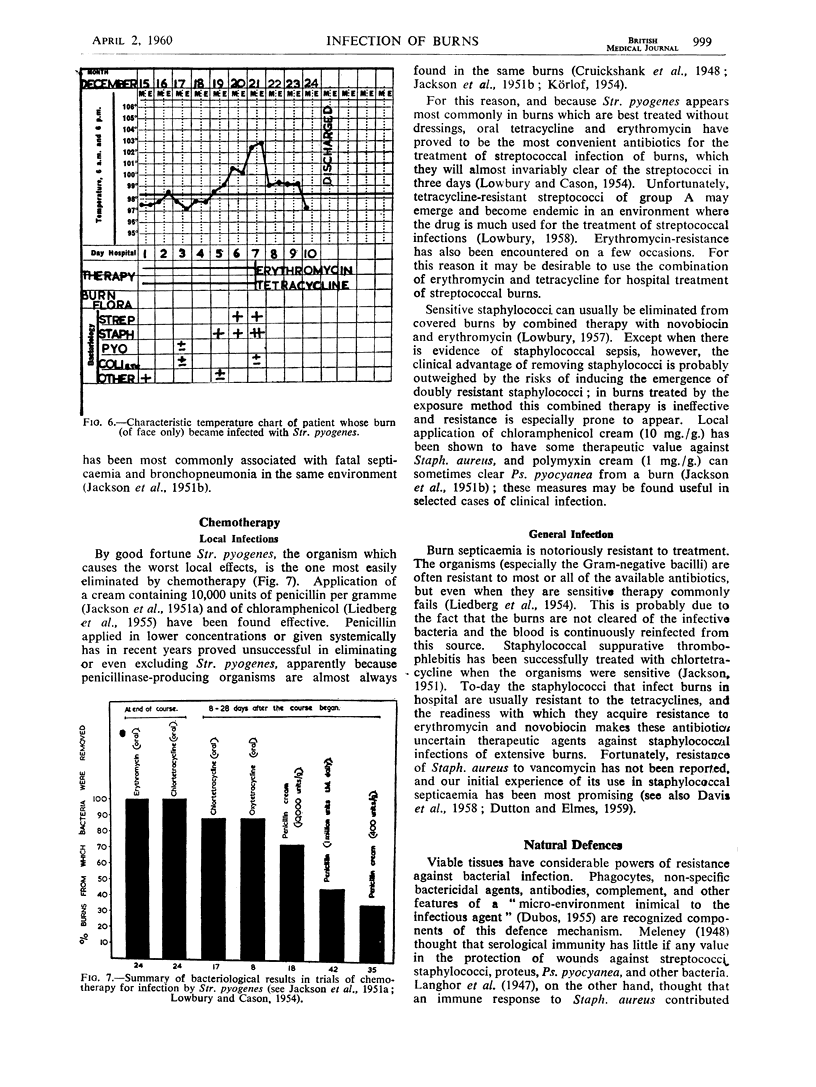
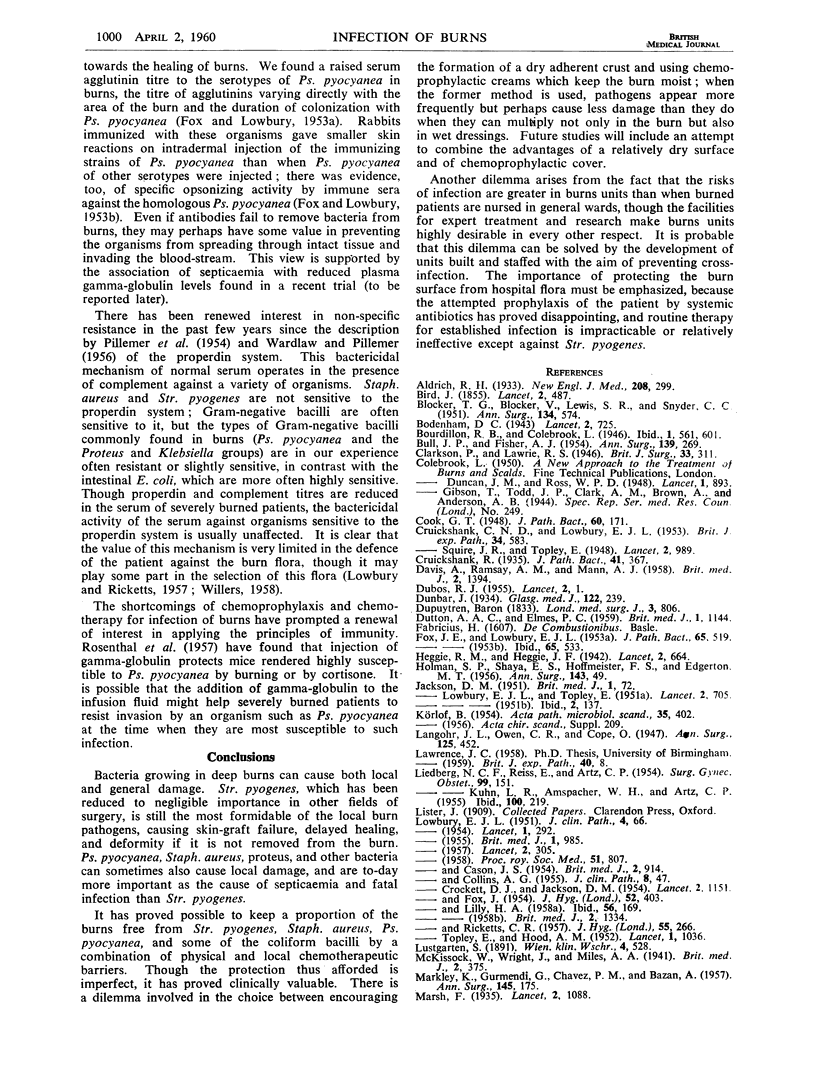
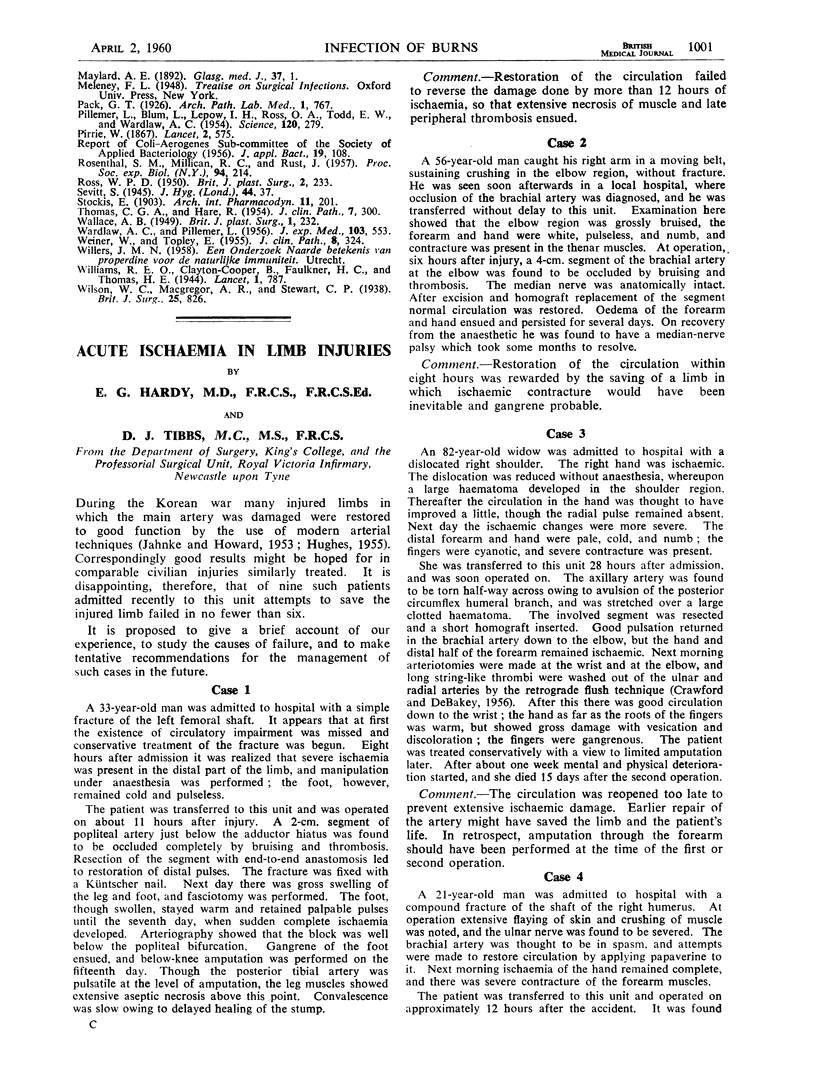
Selected References
These references are in PubMed. This may not be the complete list of references from this article.
- BAZAN A., CHAVEZ P. M., GURMENDI G., MARKLEY K. Fatal Pseudomonas septicemias in burned patients. Ann Surg. 1957 Feb;145(2):175–181. doi: 10.1097/00000658-195702000-00005. [DOI] [PMC free article] [PubMed] [Google Scholar]
- BLOCKER T. G., Jr, BLOCKER V., LEWIS S. R., SNYDER C. C. An approach to the problem of burn sepsis with the use of open-air therapy. Ann Surg. 1951 Oct;134(4):574–580. doi: 10.1097/00000658-195110000-00005. [DOI] [PMC free article] [PubMed] [Google Scholar]
- BULL J. P., FISHER A. J. A study of mortality in a burns unit: a revised estimate. Ann Surg. 1954 Mar;139(3):269–274. doi: 10.1097/00000658-195403000-00002. [DOI] [PMC free article] [PubMed] [Google Scholar]
- CRUICKSHANK C. N., LOWBURY E. J. The effect of pyocyanin on human skin cells and leucocytes. Br J Exp Pathol. 1953 Dec;34(6):583–587. [PMC free article] [PubMed] [Google Scholar]
- DUBOS R. J. The micro-environment of inflammation or Metchnikoff revisited. Lancet. 1955 Jul 2;269(6879):1–5. doi: 10.1016/s0140-6736(55)93374-2. [DOI] [PubMed] [Google Scholar]
- DUTTON A. A., ELMES P. C. Vancomycin: report on treatment of patients with severe staphylococcal infections. Br Med J. 1959 May 2;1(5130):1144–1149. doi: 10.1136/bmj.1.5130.1144. [DOI] [PMC free article] [PubMed] [Google Scholar]
- FOX J. E., LOWBURY E. J. Immunity to Pseudomonas pyocyanea in man. J Pathol Bacteriol. 1953 Apr;65(2):519–531. doi: 10.1002/path.1700650224. [DOI] [PubMed] [Google Scholar]
- HOLMAN S. P., SHAYA E. S., HOFFMEISTER F. S., EDGERTON M. T., Jr Studies on burns. I. The exposure method vs. occlusive dressings in the local treatment of experimental burns. Ann Surg. 1956 Jan;143(1):49–56. doi: 10.1097/00000658-195601000-00006. [DOI] [PMC free article] [PubMed] [Google Scholar]
- JACKSON D. M., LOWBURY E. J. L., TOPLEY E. Chemotherapy of Streptococcus pyogenes infection of burns. Lancet. 1951 Oct 20;2(6686):705–711. doi: 10.1016/s0140-6736(51)91478-x. [DOI] [PubMed] [Google Scholar]
- JACKSON D. M. Suppurative thrombophlebitis treated with aureomycin. Br Med J. 1951 Jan 13;1(4697):72–73. doi: 10.1136/bmj.1.4697.72. [DOI] [PMC free article] [PubMed] [Google Scholar]
- KORLOF B. Penicillinase-producing aureus staphylococci in a department for burns and their importance in mixed infections. Acta Pathol Microbiol Scand. 1954;35(4):402–406. [PubMed] [Google Scholar]
- LIEDBERG N. C. F., REISS E., ARTZ C. P. Infection in burns. III. Septicemia, a common cause of death. Surg Gynecol Obstet. 1954 Aug;99(2):151–158. [PubMed] [Google Scholar]
- LIEDBERG N. C. F., REISS E., KUHN L. R., AMSPACHER W. H., ARTZ C. P. Infection in burns. IV. Evaluation of the local use of chloramphenicol ointment and furacin soluble dressing on granulating surfaces following extensive full thickness burns. Surg Gynecol Obstet. 1955 Feb;100(2):219–231. [PubMed] [Google Scholar]
- LOWBURY E. J. L., TOPLEY E. Chemotherapy for staphylococcus aureus in burns. Lancet. 1952 May 24;1(6717):1036–1042. doi: 10.1016/s0140-6736(52)90693-4. [DOI] [PubMed] [Google Scholar]
- LOWBURY E. J., CASON J. S. Aureomycin and erythromycin therapy for str. pyogenes in burns. Br Med J. 1954 Oct 16;2(4893):914–915. doi: 10.1136/bmj.2.4893.914. [DOI] [PMC free article] [PubMed] [Google Scholar]
- LOWBURY E. J., CROCKETT D. J., JACKSON D. M. Bacteriology of burns treated by exposure. Lancet. 1954 Dec 4;267(6849):1151–1153. doi: 10.1016/s0140-6736(54)91987-x. [DOI] [PubMed] [Google Scholar]
- LOWBURY E. J., FOX J. The epidemiology of infection with Pseudomonas pyocyanea in a burns unit. J Hyg (Lond) 1954 Sep;52(3):403–416. doi: 10.1017/s0022172400027601. [DOI] [PMC free article] [PubMed] [Google Scholar]
- LOWBURY E. J., RICKETTS C. R. Properdin and the defence of burns against infection. J Hyg (Lond) 1957 Jun;55(2):266–275. doi: 10.1017/s0022172400037153. [DOI] [PMC free article] [PubMed] [Google Scholar]
- Langohr J. L., Owen C. R., Cope O. Bacteriologic Study of Burn Wounds : A Comparison of the Bacterial Flora of Burn Wounds of Patients Treated with Sulfonamides or Penicillin. Ann Surg. 1947 Apr;125(4):452–504. [PMC free article] [PubMed] [Google Scholar]
- Lowbury E. J. Improved Culture Methods for the Detection of Ps. pyocyanea. J Clin Pathol. 1951 Feb;4(1):66–72. doi: 10.1136/jcp.4.1.66. [DOI] [PMC free article] [PubMed] [Google Scholar]
- MILLICAN R. C., ROSENTHAL S. M., RUST J. A factor in human gamma globulin preparations active against Pseudomonas aeruginosa infect. in mice. Proc Soc Exp Biol Med. 1957 Jan;94(1):214–217. doi: 10.3181/00379727-94-22904. [DOI] [PubMed] [Google Scholar]
- PILLEMER L., BLUM L., LEPOW I. H., ROSS O. A., TODD E. W., WARDLAW A. C. The properdin system and immunity. I. Demonstration and isolation of a new serum protein, properdin, and its role in immune phenomena. Science. 1954 Aug 20;120(3112):279–285. doi: 10.1126/science.120.3112.279. [DOI] [PubMed] [Google Scholar]
- ROSS W. P. D. The treatment of recent burns of the hand. Br J Plast Surg. 1950 Jan;2(4):233–253. [PubMed] [Google Scholar]
- THOMAS C. G., HARE R. The classification of anaerobic cocci and their isolation in normal human beings and pathological processes. J Clin Pathol. 1954 Nov;7(4):300–304. doi: 10.1136/jcp.7.4.300. [DOI] [PMC free article] [PubMed] [Google Scholar]
- WARDLAW A. C., PILLEMER L. The properdin system and immunity. V. The bactericidal activity of the properdin system. J Exp Med. 1956 May 1;103(5):553–575. doi: 10.1084/jem.103.5.553. [DOI] [PMC free article] [PubMed] [Google Scholar]
- WEINER W., TOPLEY E. Döhle bodies in the leucocytes of patients with burns. J Clin Pathol. 1955 Nov;8(4):324–328. doi: 10.1136/jcp.8.4.324. [DOI] [PMC free article] [PubMed] [Google Scholar]


